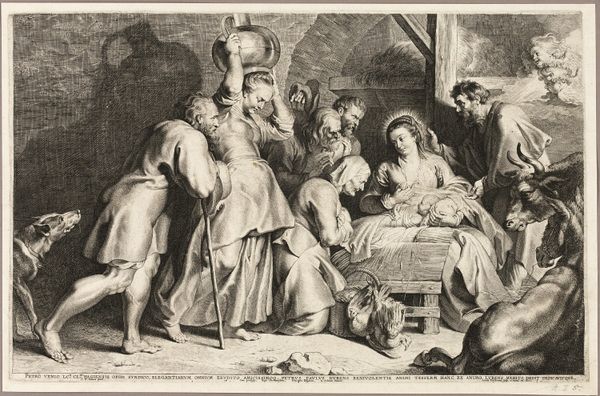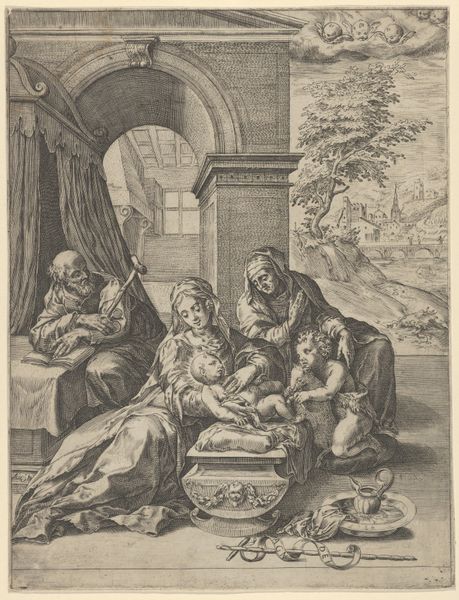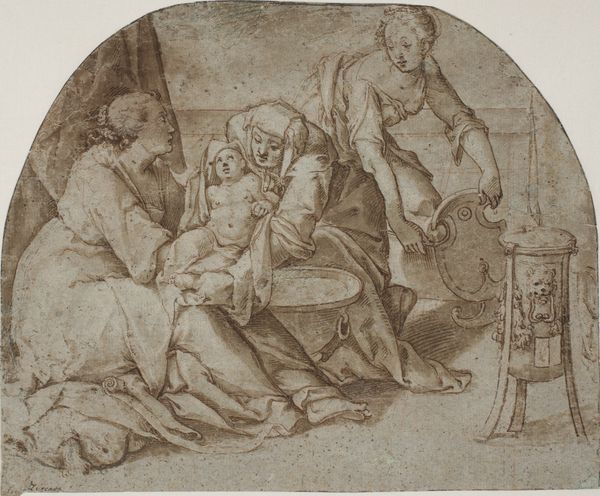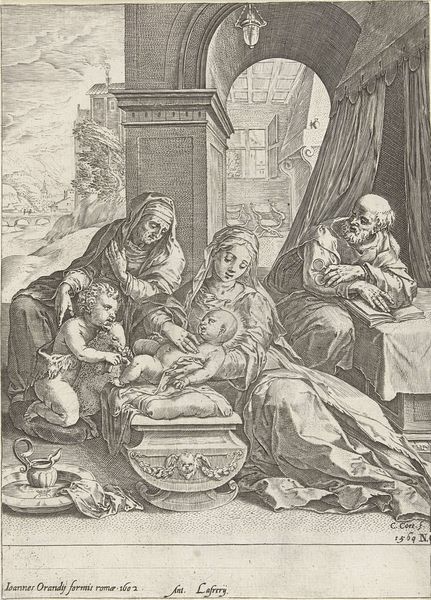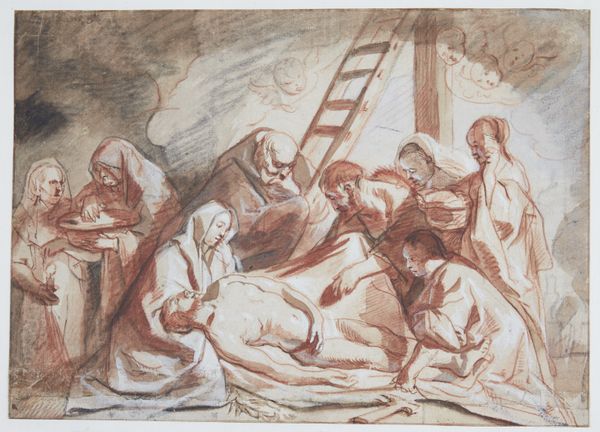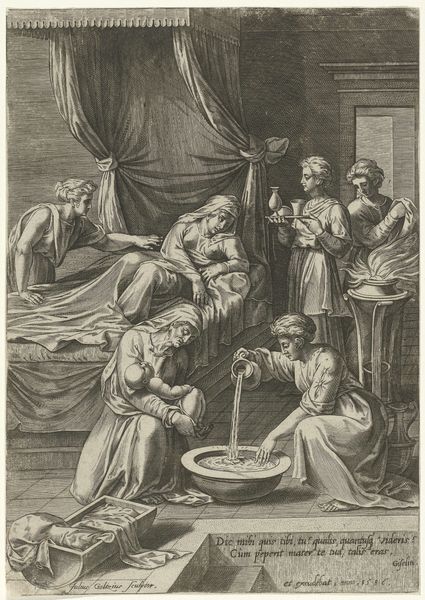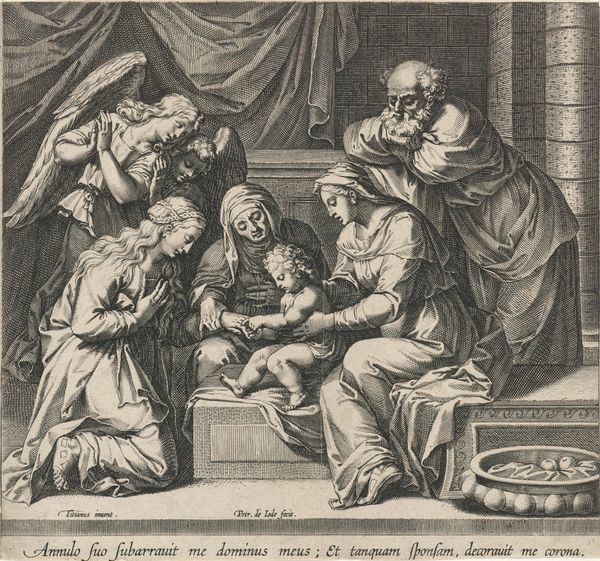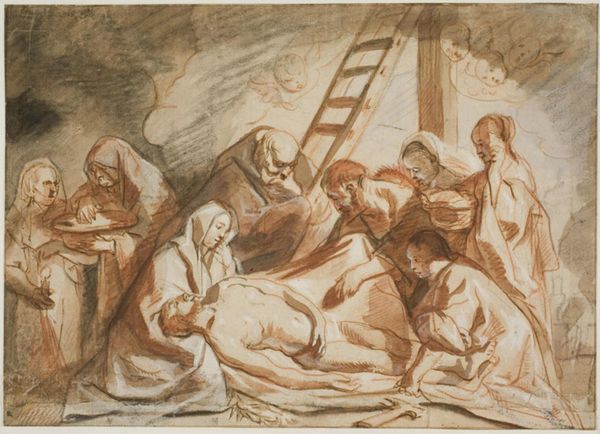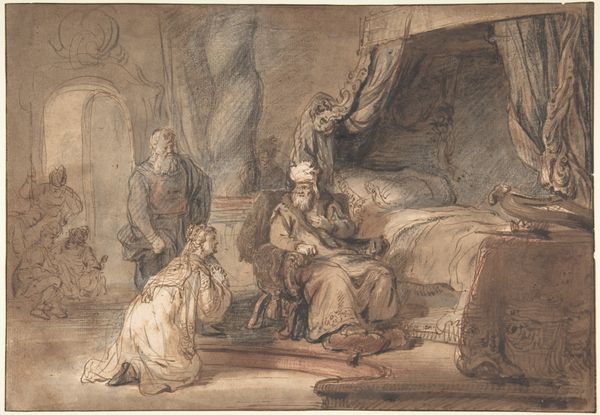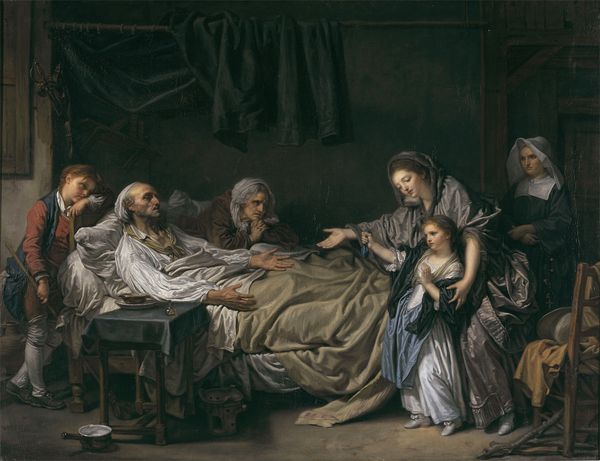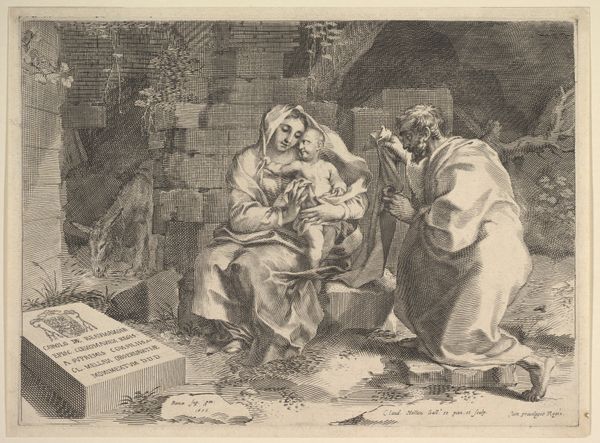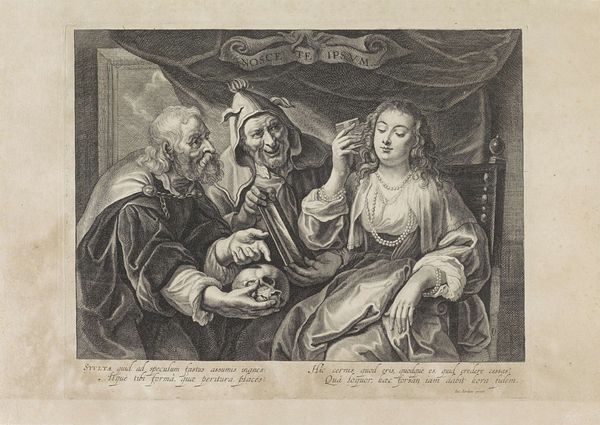
Copyright: Public Domain: Artvee
Jean-Baptiste Greuze created this wash and gouache drawing, portraying a scene of family and charity, with an elderly man on his sickbed as the focal point. Notice how the figures are arranged, their gestures heavy with emotion, almost theatrical. The open hand of the dying man—a symbol of his final wishes and the distribution of his estate—echoes across centuries, appearing in ancient Roman depictions of emperors granting clemency. This gesture isn't merely about inheritance, it's a primal appeal for continuity, a wish to extend influence beyond the grave. The young woman, bestowing alms, is a modern-day Madonna of sorts, a secular saint. This archetype, the giver of life and comfort, is as old as civilization itself, resurfacing in countless forms from ancient fertility goddesses to Renaissance paintings of the Virgin Mary. The act of charity becomes a bridge across time. Here, we see the psychological weight of familial bonds, the fear of mortality, and the enduring human need for legacy—emotions as relevant today as they were in Greuze’s time. The image resonates not just as an 18th-century scene, but as a timeless reflection of the human condition.
Comments
No comments
Be the first to comment and join the conversation on the ultimate creative platform.
